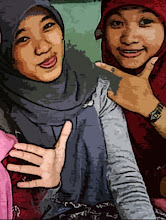No. | Besaran Pokok | Satuan SI | Simbol Satuan | Definisi |
1. | Panjang | Meter | m | Satu meter adalah jarak tempuh cahaya dalam vakum dengan waktu 1/299.792.458 sekon |
2. | Massa | Kilogram | kg | Satu kilogram adalah massa kilogram standar berupa silinder platina-iridium yang aslinya disimpan di Sevres, Paris |
3. | Waktu | Sekon | s | Satuan sekon adalah waktu yang digunakan oleh atom cesium-133 untuk bergetar sebanyak 9.192.631.770 kali |
4. | Temperatur | Kelvin | K | Satu kelvin adalah 1/273,16 kali suhu termodinaika titik tripel air Note: Suhu termodinamika titik tripel air adalah 273,16 K. Titik tripel air adalah suhu dimana air murni berada dalam keadaan seimbang dengan es dan uap jenuhnya. |
5. | Jumlah Zat | Mole | mol | Satu mol adalah jumlah zat yang mengandung unsur elementer zat tersebut sebanyak jumlah atom karbon dalam 0,012 kg karbon-12 |
6. | Kuat Arus Listrik | Ampere | A | |
7. | Intensitas Cahaya | candela | Cd | Satu candela adalah intensitas cahaya suatu sumber cahaya yang memancarkan radiasi monokromatik pada frekuensi 540x1012 Hz dengan intensitas sebesar 1/683 watt per steradian dalam arah tersebut |
Satuan SI dan Definisi
Read User's Comments0
Virus
A virus was discovered by Adolf Meyer in 1883. A virus is a metaorganism or transitional organism (organisme peralihan), because the characteristic is like living thing (only can develop in the living organism) and inanimate (because virus can be critalized, while the other living thing can’t be cristalized).
Virus is acellular organism (not a cel organism). Why? Because virus doesn’t have a cel membrane, protoplasm, and so on. It only has nucleolus in the form of DNA or RNA and selubung protein.
The structure of viruses can be seen in Bacteriophage virus or bacteria eater virus:
1.Head > there is DNA or RNA. DNA found on the T4 virus, while RNA found on the AIDS, polio and influenza virus. The shape of the virus’ head is like octagonal (segi 8).
 2.Tail Fiber > this fiber will stuck in the cell when attacked. The virus’ tail is covered with capsid (protein coat) containing protein.
2.Tail Fiber > this fiber will stuck in the cell when attacked. The virus’ tail is covered with capsid (protein coat) containing protein.3.Skin > arranged from protein.
The shapes of virus : various shapes of virus, namely cylindrical, oval, square, elongated (memanjang), polihedral.
The size of virus : Viruses are usually much smaller than bacteria and are submicroscopic. Most range in size from 5 to 300 nanometers (nm), although some Paramyxoviruses can be up to 14,000 nm long.
Virus Reproduction : 1. Lytic Cycle 2. Lysogenic Cycle
1.Lytic Cycle > virus yg melangsungkan daur litik disebut VIRULENT. Daur litik terdiri dari 3 tahap Adsorption and Penetration Stage, replication stage, lyses stage.
2.Lysogenic Cycle > virus yg melangsungkan daur lisogenik disebut TEMPERATE VIRUS. Daur lisogenik terdiri atas 3 tahap juga: Adsorption and Penetration Stage, gene insertion stage, division stage.
The Diversity of Viruses
-Berdasarkan jenis sel inang yang diinfeksi: virus manusia, hewan, tumbuhan, bakteri.
Virus manusia > menginfeksi manusia, dst
-Berdasarkan jenis materi genetika: virus DNA > contoh adenovirus, virus herpes dan virus RNA > contoh virus rabies, influenza, polio.
Note:
Virus hanya dapat bereproduksi apabila berada dalam sel makhluk hidup karena virus hanya dapat bereproduksi di dalam material hidup dengan menginvasi dan mengendalikan sel makhluk hidup karena virus tidak memiliki perlengkapan selular untuk bereproduksi sendiri
# bberapa soal ttg virus n jawaban http://id.answers.yahoo.com/question/index?qid=20100814055933AAFMybS
# bberapa soal ttg virus n jawaban http://id.answers.yahoo.com/question/index?qid=20100814055933AAFMybS
Subscribe to:
Comments (Atom)









